キーワード:メディア技術、メディア芸術、バーチャルリアリティ、デバイスアート、インタラクティブアート
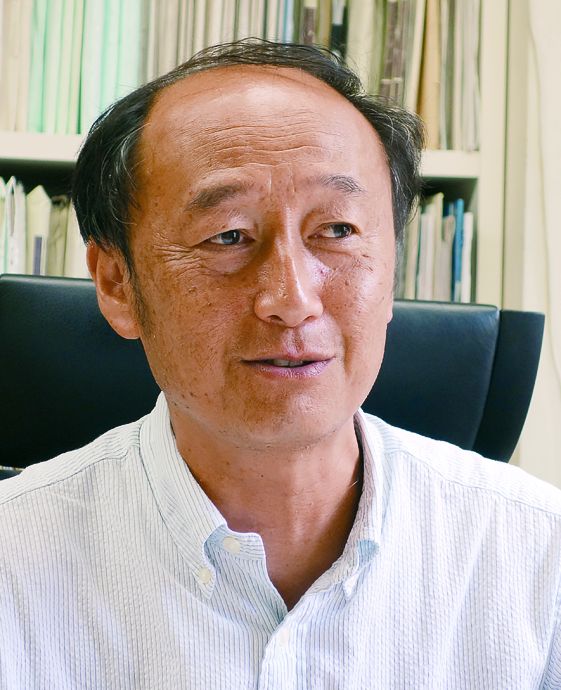 アルスエレクトロニカ*1とは、世界で最大規模のメディアアートの芸術祭です。ここで2011年、本リサーチユニットによる筑波大学キャンパス展があり(図1)、メディアアートをテクノロジー、アート、デザインの観点から横断的に分析し、世界に向けて発信しました。総合大学として唯一芸術系を有する筑波大学は、90年代以前から世界のメディアアートの世界で中心的な役割を果たしてきました。工学系・芸術系の研究者が連携し、科学技術と文化芸術を融合させ、世界トップレベルの芸術表現を開拓しています。
アルスエレクトロニカ*1とは、世界で最大規模のメディアアートの芸術祭です。ここで2011年、本リサーチユニットによる筑波大学キャンパス展があり(図1)、メディアアートをテクノロジー、アート、デザインの観点から横断的に分析し、世界に向けて発信しました。総合大学として唯一芸術系を有する筑波大学は、90年代以前から世界のメディアアートの世界で中心的な役割を果たしてきました。工学系・芸術系の研究者が連携し、科学技術と文化芸術を融合させ、世界トップレベルの芸術表現を開拓しています。
*1:アルスエレクトロニカ・フェスティバルは、1979年から
オーストリアのリンツで開催されている芸術・先端技術・文化
の祭典。世界最大級のメディアアートに関するイベント
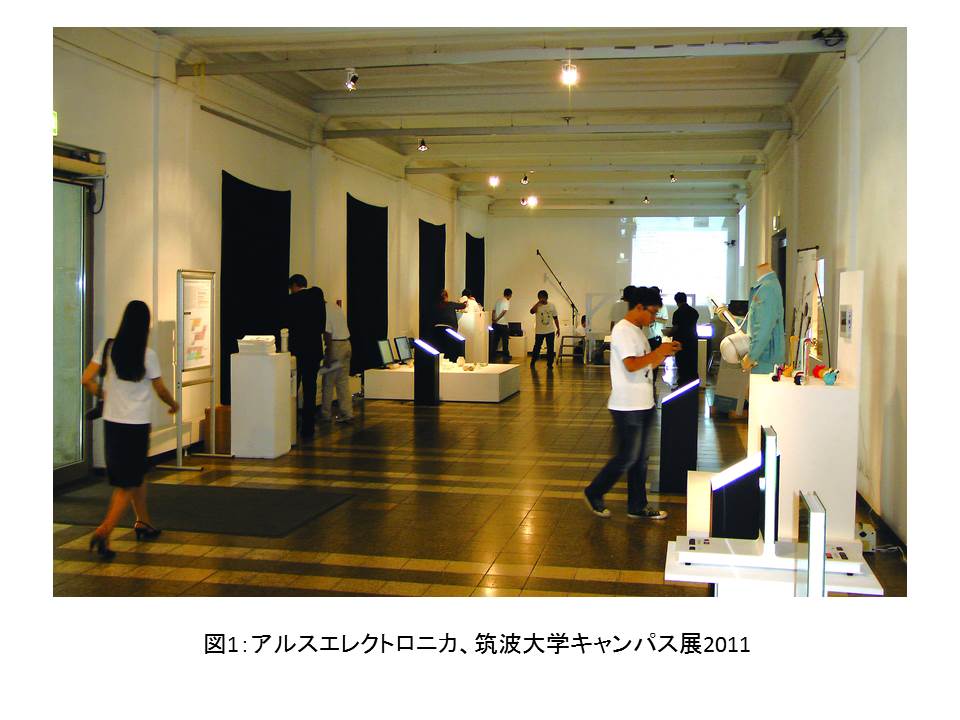
デバイスアートではデバイス自体が作品になる。技術の本質を表現の内容にしていく
筑波大学のメディア芸術作品は他にない特徴を有し、世界的に注目されています。それは、アルスエレクトロニカで1987年以降、数多くの受賞作品を出してきたことにも現れています。初期の先駆的な時期において、映像作品(ホログラフィックアート)やデバイスアートなど多数出品してきました。通常、芸術は技術を表現の一手段に利用するに過ぎないと考えます。そうではなく、先進的な技術そのものを表現の本質にしようという新しい芸術がデバイスアートです。
「自分とは何か」「どれだけ歩いてもどこにも行けない」:デバイスアートで追求するテーマ
例えば、フローティングアイ(図2)という作品では、球面ディスプレイの中に入ると、視点は飛行船に乗り移り頭上から自分を見下ろします。幽体離脱したかのような感覚は、「自己とは何か」というテーマを問いかけます。つくばスコープ(図3)を覗くと、そこから見えるはずの景色が見えますが、その映像には仕掛けがしてあり、道路の矢印がヒューッと動き出すなど、絶対に動かないはずの物が奇怪な動きをします。そしてトーラストレッドミル(図4)は普通のトレッドミルと異なり、どの方向にも歩くことができます。さらに映像と組み合わせ、バーチャルの世界を自由に歩き回ることができます。ところがこの装置はどの方向に歩いても元に戻り、「どれだけ歩いてもどこにも行けない」というテーマをも表現するものです。このように、テクノロジーを芸術的な観点から作品化していき、研究者や技術者だけでなく一般の方々にも訴えることができるのもデバイスアートの魅力の1つです。
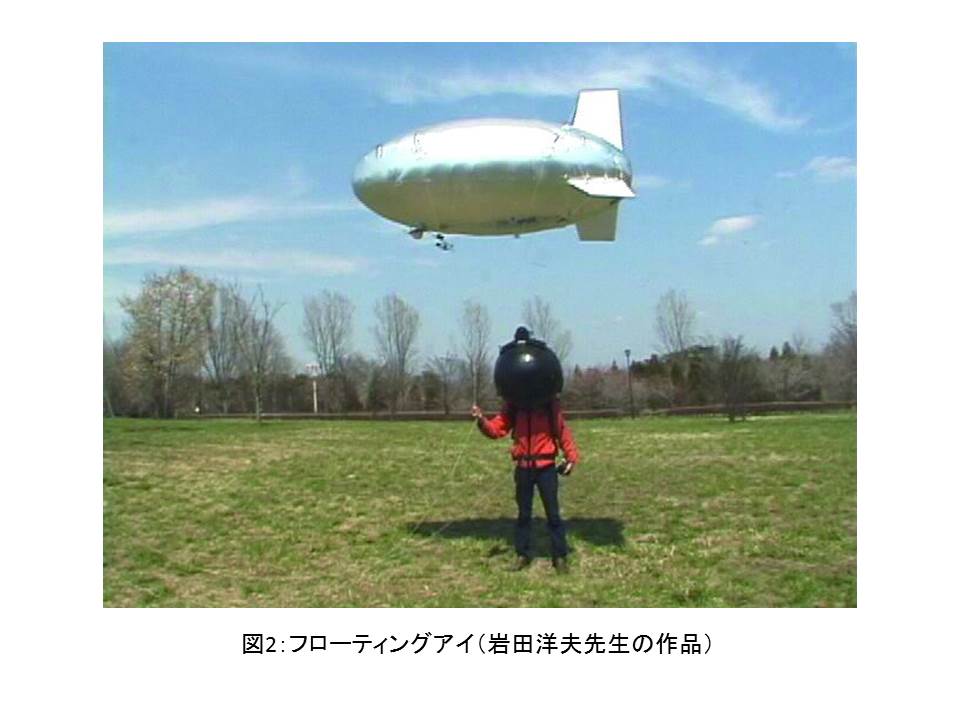
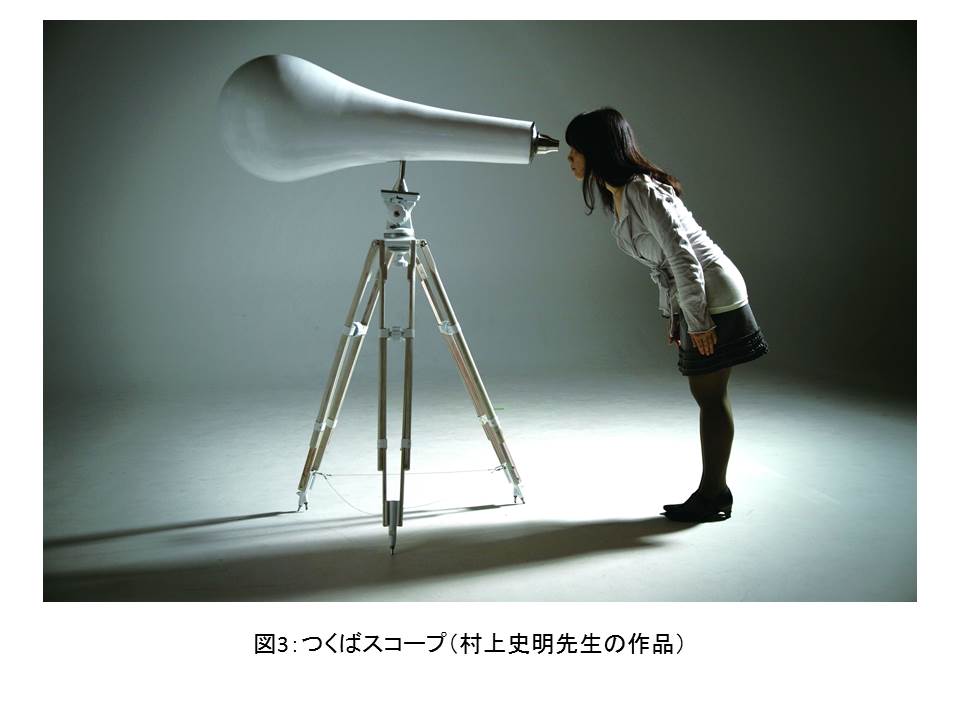
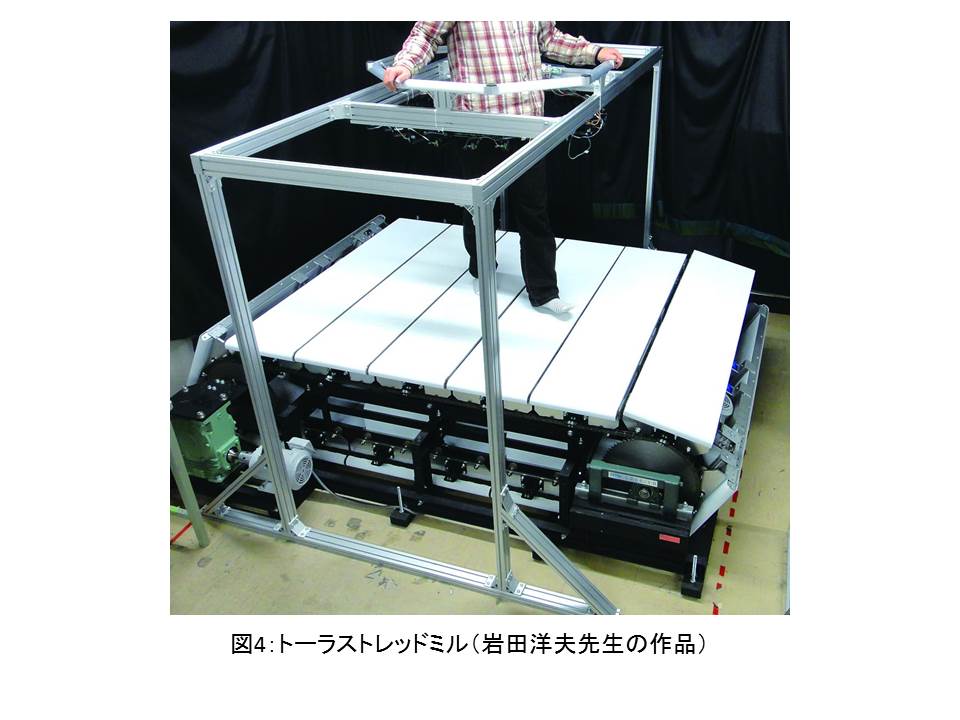
社会への貢献・実績
● 工学と芸術を融合させ、筑波大学独自の表現様式を探求し、新たな学問体系を創造
● 総合科学技術型クリエータの育成
● 基盤技術「デバイスアート・ツールキット」の製品化
● 日本科学未来館「零一庵:デバイスアートコレクション」の設置
● Ars Electornica 2011 (http://www.tsukuba.ac.jp/topics/20101216190034.html)
● Ars Electornica 2011筑波大学キャンパス展図録
(取材:平成25年7月19日)
Promotion of the Integration of Science Technology with Art to Propose a New Art Style
Unit members : Hara Tadanobu Murakami, Fumiaki Uchiyama, Toshiaki Yano, Hiroaki
Key words:media technology, media art, virtual reality, device art, interactive art
Ars Electronica*1 is the world’s largest-scale media art festival. Our research unit held the University of  Tsukuba Campus Exhibition at Ars Electronica 2011 (Figure 1). The exhibition aimed to conduct cross-sectional analysis of media art and introduce it to the world. From around the 1990’s, the University of Tsukuba, which is the only university in Japan that has art-related departments, has been playing a
Tsukuba Campus Exhibition at Ars Electronica 2011 (Figure 1). The exhibition aimed to conduct cross-sectional analysis of media art and introduce it to the world. From around the 1990’s, the University of Tsukuba, which is the only university in Japan that has art-related departments, has been playing a
leading role in the field of media art in the world. Engineering and art researchers of the university collaborate with each other to integrate science technologies, culture, and art, exploring the world’s top-level art expressions.

Figure 1: Ars Electronica, the University of Tsukuba Campus Exhibition 2011
The world of device art in which devices themselves are presented as works of art with a focus on the expression of the essence of technologies
Media art created in the University of Tsukuba has many unique features and has attracted attention from all over the world, including a number of Ars Electronica award-winning works since 1987. In the early period of Ars Electronica, the university exhibited many different works of art involving images (holographic) and devices as a pioneer. It is commonly believed that art only uses technologies as a means of expression. On the other hand, device art is a new form of art in which advanced technologies themselves are the essence of expression.
“What is the self?” “Walking on and on to arrive nowhere”: Themes pursued in Device Art
Figure 2 shows the “Floating Eye”. You enter the spherical display, and your viewpoint will be shifted to the blimp, looking down on yourself.This piece of work, created under the theme of “What is the self?”, makes you feel as if you are having an out-of-body experience. The scenery you are looking at through the Tsukuba Scope (Figure 3) may appear to be ordinary. However, you are actually viewing an image full of illusions. An arrow painted on the road and other objects in this image move suddenly and strangely. The Torus Treadmill (shown in Figure 4) is markedly different from other treadmills. If you step onto it, you can walk in any direction. When combined with images, the treadmill allows you to walk freely in virtual space. However, another theme of this device is “Keep walking to arrive nowhere”, and you are bound to return to the starting point, regardless of the direction in which you started to walk. Device art is attractive in that technologies are interpreted and presented as works of art for researchers, engineers, and the general public.

Figure 2: Floating Eye (created by Professor Hiroo Iwata)

Figure 3: Tsukuba Scope (created by Professor Fumiaki Murakami)

Figure 4: Torus Treadmill (created by Professor Hiroo Iwata)
*1: The Ars Electornica Festival is a festival for art, advanced technologies, and culture that has been held in Linz, Austria, since 1979. It is the world’s largest media art event.
Social contributions and achievements
● Training of comprehensive-science-and- technology-oriented creators – “Device Art Tool Kit”, a basic technology, put into production
● Establishment of the “Tearoom of Zero/One: Device Art Collection” in the National Museum of Emerging Science and Innovation
● Ars Electornica 2011 (http://www.tsukuba.ac.jp/topics/20101216190034.html)
● Ars Electornica 2011 / Brochure of the University of Tsukuba Campus Exhibition
